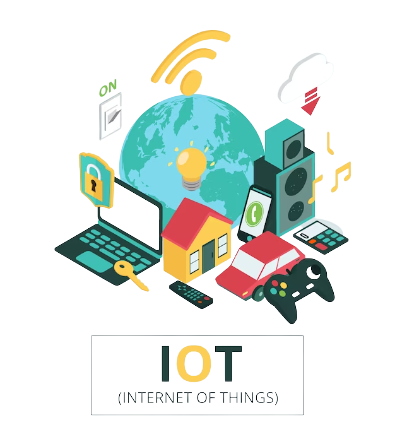From smart homes and wearable devices to industrial sensors and autonomous vehicles, IoT has permeated every aspect of our lives. However, as the IoT landscape expands exponentially, the importance of securing IoT ecosystems becomes increasingly evident.
In today’s fast-paced digital era, the Internet of Things (IoT) has emerged as a transformative force, reshaping industries and revolutionizing the way we interact with technology. From smart homes and wearable devices to industrial sensors and autonomous vehicles, IoT has permeated every aspect of our lives. However, as the IoT landscape expands exponentially, the importance of securing IoT ecosystems becomes increasingly evident. In this comprehensive blog post, we will delve deeper into the critical role of IoT security and provide actionable best practices to safeguard connected devices and the invaluable data they generate.

The Intricate Web of IoT Ecosystems:
At the heart of the IoT revolution lies a complex and intricate network of interconnected devices, applications, and data streams. The proliferation of IoT devices has created a vast digital ecosystem that transcends traditional boundaries. Within this ecosystem, countless interactions occur between devices, often across multiple platforms and networks. We’ll explore the intricate dynamics of IoT ecosystems, shedding light on the potential security vulnerabilities that can be exploited by malicious actors.
Recognizing the Urgency of IoT Security:
As the adoption of IoT devices continues to soar, so does the risk of cyberattacks. From personal privacy breaches to large-scale industrial disruptions, the consequences of compromised IoT ecosystems can be far-reaching and devastating. This section will delve into real-world examples of IoT security breaches, underscoring the urgent need for proactive measures to protect connected devices and the data they generate.
The Pillars of Robust IoT Security:
Securing IoT ecosystems requires a multi-faceted approach that encompasses various aspects of cybersecurity. We will delve into the five key pillars of IoT security: device security, data encryption, secure communication, regular updates, and user authentication. By establishing a strong foundation in each of these areas, organizations can create a comprehensive security framework capable of withstanding a wide range of threats.
Bolstering Device Security: A Cornerstone of IoT Protection:
The security of individual IoT devices is paramount to the overall resilience of the ecosystem. We’ll delve into the importance of securing device hardware, software, and communication interfaces. Practical tips on implementing access controls, disabling default credentials, and employing secure boot mechanisms will be provided to guide readers in ensuring the integrity of their devices.
Safeguarding Data Through Encryption:
The data generated and transmitted by IoT devices is a prime target for cybercriminals. Encryption plays a pivotal role in safeguarding sensitive information, both during transmission and storage. We’ll explore different encryption protocols and methodologies, shedding light on how they contribute to maintaining data confidentiality and preventing unauthorized access.
Establishing Secure Communication Channels:
Unencrypted communication between IoT devices and networks can leave critical data vulnerable to interception. We’ll delve into the importance of using secure communication protocols, such as HTTPS, MQTT, and CoAP, to create a robust data exchange environment. Real-world examples will illustrate the impact of secure communication on mitigating cyber threats.
Ensuring Regular Updates and Patch Management:
Outdated software and unpatched vulnerabilities pose significant risks to IoT ecosystems. The importance of continuous updates and effective patch management will be underscored, along with insights into the potential consequences of neglecting these vital practices.
Enhancing User Access Control Through Authentication:
Human behavior remains a critical factor in IoT security. We’ll explore the significance of multi-factor authentication in preventing unauthorized access to IoT devices and systems. Practical guidance on implementing strong authentication mechanisms will empower readers to create a robust user access control framework.
Leveraging AI and Machine Learning for Proactive Security:
Advancements in AI and machine learning have empowered organizations to detect anomalies and potential threats in real time. We’ll discuss how these technologies contribute to predictive threat analysis and proactive security measures, fostering a more resilient IoT ecosystem.
The Future of IoT Security:
As the IoT landscape continues to evolve, so must security strategies. We’ll delve into emerging trends and technologies that hold promise for the future of IoT security. Including blockchain integration, edge computing, and zero-trust architectures. By staying abreast of these developments, organizations can effectively future-proof their IoT ecosystems.
Conclusion:
The rapid proliferation of IoT devices has revolutionized the way we live, work, and interact with the world around us. However, this unprecedented connectivity also introduces significant security challenges. Tanbits provides IoT services that, along with adhering to the best practices outlined in this guide, help individuals, businesses, and industries establish a resilient foundation for safeguarding IoT ecosystems. As the IoT continues to shape our digital future, a proactive and comprehensive approach to security will be pivotal in ensuring a safer, more secure, and more prosperous connected world.
BACK










